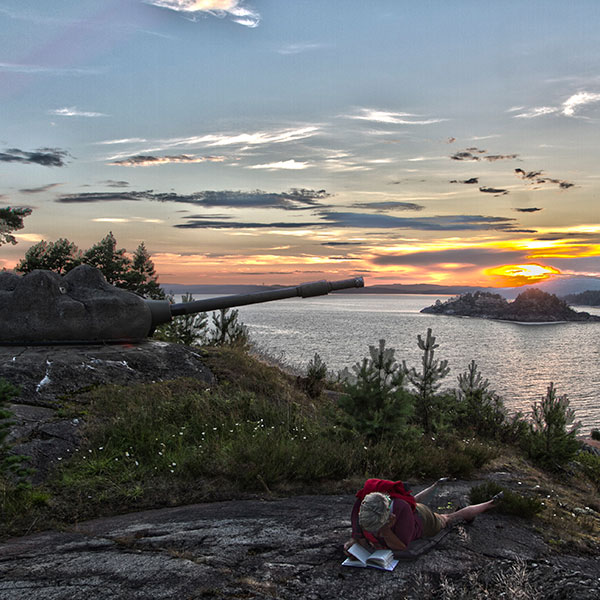An extraordinary destination
Located in the mouth of the Ångerman River, just outside of Härnösand, lies the island of Hemsön, home to Hemsö Fortress, historically one of Sweden’s most significant defense installations. The fortress has a past as the largest coastal defense facility and is the only one of its kind preserved. From the main facility (Hö1), carved into the 140-meter-high Storåberget, there is a sweeping view of the coast, sea, and islands.
Historically, the area has repeatedly faced intrusions from what was perceived as the enemy. Because of this, the area has had significant strategic importance for Swedish defense, leading to the construction of Hemsö Fortress in 1953, following a defense decision to increase defense resources. Four years later, the top-secret mountain facility was completed. 320 soldiers served 40 meters deep inside the mountain, where they would survive a nuclear attack shielded by the rock.
The well-equipped facility includes workshops, large kitchens, a medical ward, lodgings, its own power plant, a fire control center, boilers, radar installations, a dining hall, mess halls, showers, a command center, a mechanical workshop, and gun turrets. The environment is pristine and uniquely preserved, both internally and externally. The Hemsö Barrier Battalion consists of three facilities: Storråberget (HÖ1), Havstoudd (HÖ2), and Kläffsö measurement station for Storråberget heavy artillery. The establishment of the light battery at Havstoudd took place between 1961-1963, and Kläffsön between 1967-1968.
Conscripts at KA 5 in Härnösand spent 5 months of their military service on Hemsön until 1989 when the facility was finally decommissioned and converted into a training facility. In 1992, Hemsö Fortress was closed for good.




Storåberget (HÖ1)
Havstoudd (HÖ2)
Kläfsön
The Heavy Battery 15.2 cm
The Light Battery 7.5 cm
External Measurement Station
